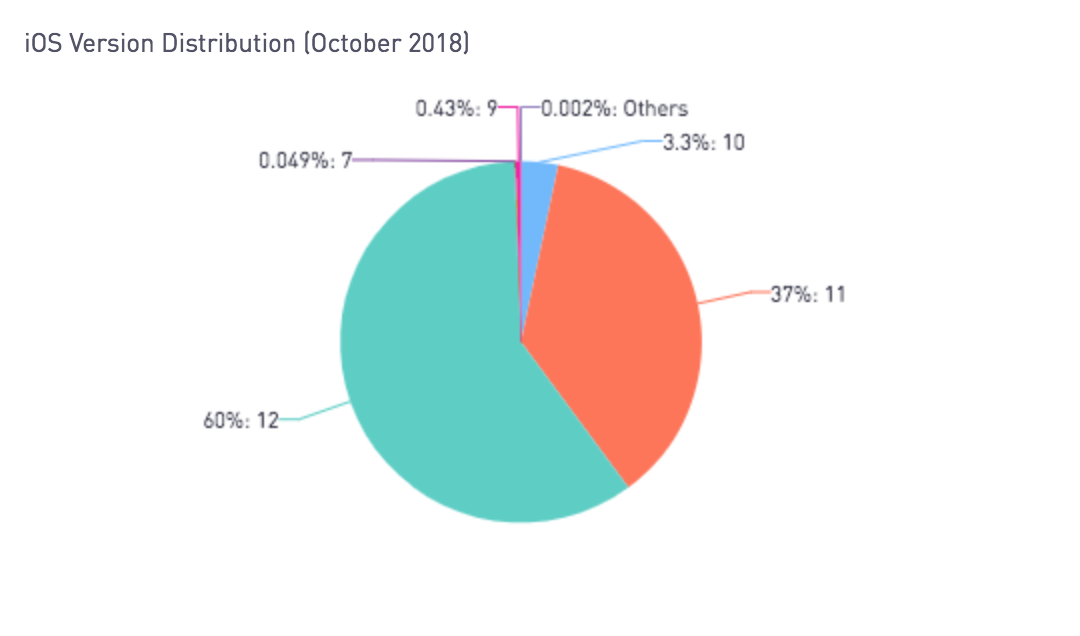While the seasons may be changing, the same can’t be said for consumer tastes, as the adoption rate for the latest iPhone XS and XS Max have noticeably trailed past Apple product launches in their first few weeks on the market.
After two weeks of adoption, the XS and XS Max were only able to capture 1.1 percent and 1.5 percent of the total iPhone market, respectively, while the legacy iPhone X enjoyed 1.8 percent share at the end of it’s first two weeks. When looking at the “Day One” figures for both the latest models and the X last fall, the contrast in initial orders is just as glaring, as the X immediately took up 0.91 percent of the market when it came online, while the XS and XS Max hardly held a candle, only accounting for 0.45 percent and 0.65 percent of devices, respectively, upon their debut.
For comparison, the iPhone 6S and the iPhone 7 each came out of their first two weeks with 2.9 percent and 2.4 percent of the market.
This can be interpreted a number of different ways, with the most likely conclusions being that the latest iPhones are entering a much more crowded playing field than the iPhone 7 and 6S enjoyed when they first came online. The sheer number of devices available today may simply be diluting the market, rendering the XS and XS Max’s impact minimal compared to the iPhone 6S and 7.
Adoption may not have reached the apex that Apple was looking for, but the device is still hugely popular.
Today, the iPhone 7 continues to dominate the market, with the 6S and X in close second. The X easily overtook the iPhone 8 and 8 Plus models in terms of market share since it was introduced last year, despite rumors of production constraints and concerns about sales in early 2018. The iPhone 8 Plus just barely trailed behind the XS in its first two weeks of adoption, however both the iPhone 8 and 8 Plus currently occupy 11% of the market.
Meanwhile, it’s clear that device-owners have hopped on the iOS update train, since 60 percent of users have downloaded and are using version 12, while only 37 percent of iPhone owners are still on iOS 11 and 3 percent have not made it past iOS 10.
With iOS 12 comes the concept of provisional authorization, which allows end-users to choose how they receive notifications on first receipt of an app’s “quiet” push (notifications that only appear in the notification center). Users can choose to have pushes delivered prominently, continue to be delivered quietly, or turned off completely. You can read more about the new push features here.
It wouldn’t be a new iOS version release without some issues however, including a wifi connectivity bug and problems with charging through the lightning port on the iPhone XS.
More iPhones on the horizon
What remains to be seen is what impact the third new iPhone in the latest round of new models — the XR, which is slated for an October 19 release — will have on the larger market. It’s expected that the XS and XS Max may be overtaken by the XR, which starts at a much lower price ($749 compared to the XS’s $999 and XS Max’s $1099), but contains many of the same features with the exception of the XS’s stainless steel frame, OLED screen, and maximum storage option.
The XR’s battery life is also purported to be much greater than the XS’s, boasting up to 15 hours of use compared to the XS’s nine hours and 41 minutes and the XS Max’s 11 hours and 30 minutes.
Methodology
Localytics is the leading mobile engagement platform across more than 750 million devices and 12,000 mobile and web apps. Localytics processes 120 billion data points monthly. For this study, we examined 40 million iOS devices globally. For the iPhone adoption data, we examined the relative percentage of iPhones in the first weekend after each device’s release. The timeframe for the iPhone adoption data was Oct. 9th – Oct. 12th at 2 pm ET.


